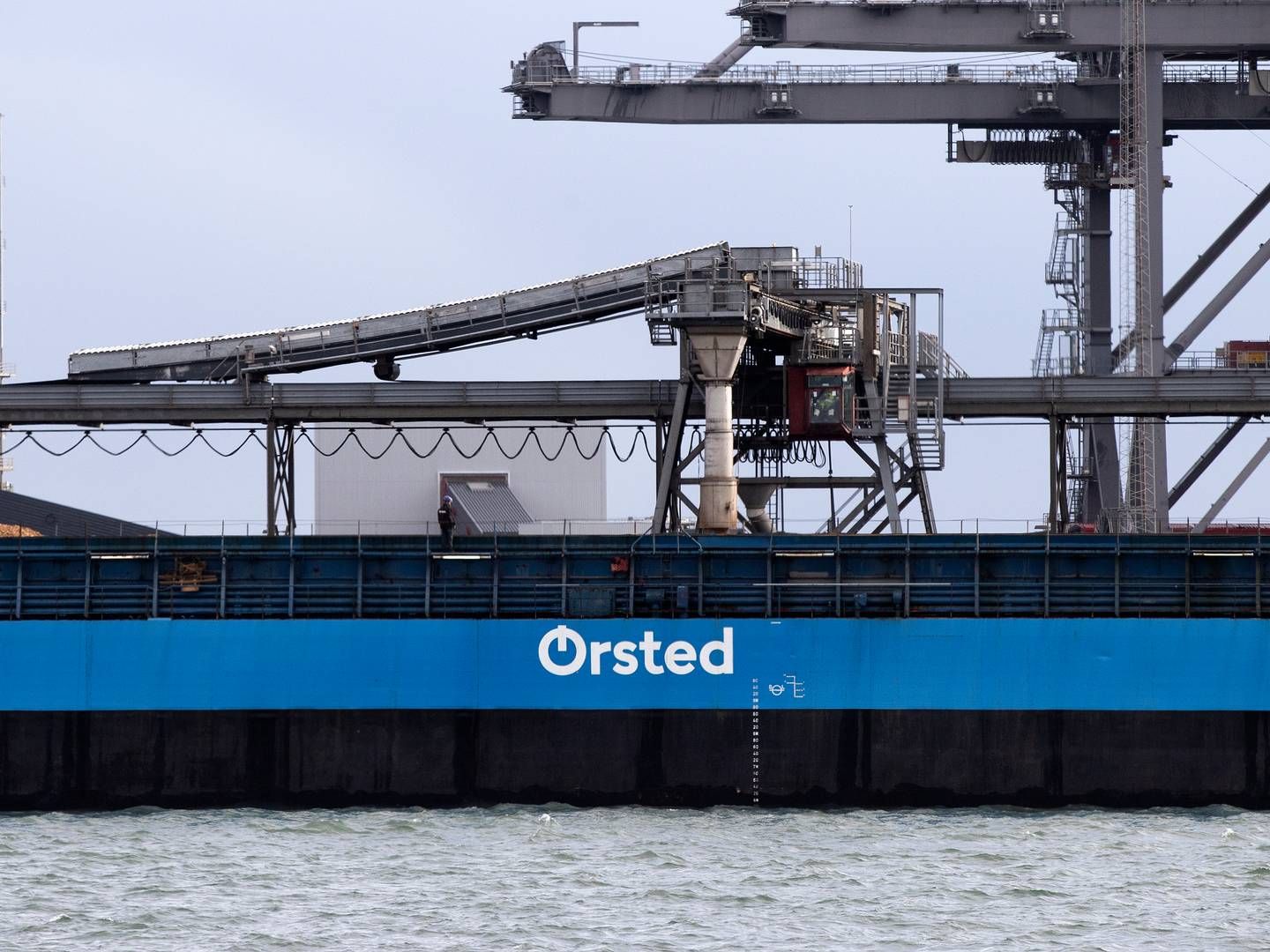News Media and the Globalization of the Public Sphere
Artiklen er første gang bragt i Stig Hjarvard (ed.) News in a Globalized Society, Göteborg: Nordicom, 2001.
For yderligere information Klik her
Icons of globalization
In both scholarly work and public debate on globalization, the influence of media and particularly electronic media on social change is considered to be of prime importance. In sociological and cultural analyses of globalization (e.g., Giddens, 1999; Tomlinson, 1999), media such as satellite television, the Internet, computers, mobile phones etc. are often thought to be among the primary forces behind current restructurations of social and cultural geography. Electronic media facilitate an increased interconnectedness across vast distances and a temporal flexibility in social interaction. Furthermore, a handful of media enterprises and media moguls such as Time-Warner-AOL, Disney, Rupert Murdoch, and Bill Gates have become icons of globalization. These media companies and actors both have ambitions of global market domination and serve as the messengers of a new global era. Particularly the transnational news services with a global or regional reach, such as CNN, BBC World, Euronews, Sky News, and Star News, have come to be regarded as the town criers of the global village. Their continuous, on-line, and live distribution of news to all corners of the world has become emblematic of a world in which place and time mean less and less.
Parallel to the emergence of this globalized media environment, a gradual change in the social geography of public and political communication has taken place. The national embeddedness of the public sphere and public opinion no longer goes unquestioned. Increasingly, the formation of public opinion also takes place across national boundaries. The “opinion of the international community” no longer refers unambiguously to the opinions of assemblies of state leaders or the cosmopolitan elite, but increasingly to a less tangible, phantomlike, and much more volatile phenomenon emerging from extensive media coverage of world events. At least on certain special occasions, a transnational, if not global public sphere has emerged as a forum for political discussion and opinion formation. A series of international events during the last decade bear witness to the transnationalization of the public sphere and public opinion formation: Shell’s plan to dump the Brent Spar oil platform in the North Sea, French nuclear testing in the Pacific Ocean, the suppression of student demonstrations in China, UN conferences on the environment, women, social development etc., the death of Lady Diana, Jörg Haider’s Freedom Party’s participation in Austria’s government etc., etc.
During events like these, a series of interactions in different countries are activated and connected to each other partly as a result of intense media coverage. Actions by governments, corporate business interests, NGOs, and the civil society in general (demonstrations, appeals, strikes etc.) feed into a transnational public sphere and incite reactions and discursive responses in different regions and countries. The aggregation of public opinion during this process takes place both nationally and transnationally, and the media representation of this transnational public opinion acquires its own momentum. Although political leaders are still most sensitive to public opinion articulated within their own national boundaries, they cannot afford to ignore the public opinion articulated through the global media. This transnational public opinion represents a political force in its own right, and it has the ability to influence national opinions and, thus, to change the national political basis of power.
Under special circumstances, the power of such globalized public opinion poses a severe problem for even the mightiest nations, because public opinion demands political action that either contradicts national policies or outstrips the diplomatic, economic or military power of the nations involved. The intensive coverage by CNN and other global news media of the student demonstrations in China in 1989 created an urgent call for action by the international community, but the reality was that the major powers' political will and ability to act were quite limited. As a senior official from the US State Department said in reaction to the intensive media coverage of the Chinese authorities’ violent suppression of protesters in Tiananmen Square: “It demanded a solution we couldn’t provide. We were powerless to make it stop” (1). In some cases, the rise of an internationally mediated public opinion does make a difference, even in terms of subsequent political action. The killing of Brazilian street children became an international media story, and this had a profound impact on national politics in Brazil (Serra, 2000).
It is important to stress, however, that although transnational public opinion can be very forceful during events with intensive media coverage, it is most often the case that political, economic or military decisions and actions concerning transnational or global matters take place without intense public attention. The routine, day-to-day decisions and actions related to international politics may often receive news coverage, but rarely do they induce a transnational dialogue involving people other than cosmopolitan elites such as diplomats, government officials, NGO experts, transnational business executives and information officers etc. On most occasions, a broader public debate about international issues rarely extends beyond this political elite, and if it does, it is confined to the framework of the national public sphere.
Although news media increasingly transcend national borders, this does not in itself create a public sphere at a transnational or global level. In fact, it can be argued that the development of the public sphere has increasingly become out of sync with the globalization of economy, governance, and culture. As regards industrial production and financial transactions, the world is becoming more and more interconnected and interdependent, and the flows of cultural products and symbols across borders have intensified. Similarly, political governance increasingly transcends the nation-state, as in the case of the EU. This does not imply, however, that the nation-state is necessarily losing power, but rather that it is acquiring a new role as the mediator of political governance between local, national and supranational levels. The globalization of economy, governance, and culture has not been accompanied by a similar globalization of the public sphere. Opinion formation is still very much tied to the level of national political institutions.
As a starting point, the following paradox can be observed regarding the relationship between the development of the news media and the public sphere: Due to the growth in transnational and global news media, public opinion formation occasionally transcends national borders and acquires a political momentum of its own at a global level. However, compared to the globalization of politics, economy and culture, the public sphere and the formation of public opinion are still very much tied to a national level and oriented toward national political institutions. This seemingly contradictory development has provided support for very different interpretations of current media changes. The idea that the rise of global media has instituted a global public sphere has both been proclaimed and denounced by media scholars, and both sides have actually been able to provide some empirical support for their interpretations. However, the apparent inextricability of these opposing viewpoints may – at least to some extent – be due to a lack of theoretical consideration of how current transformations in the social geography of media may be conceptualized.
A global public sphere?
In an overview of current globalization theories, Held et al. (1999) distinguish between the hyperglobalizers, on the one hand, and the sceptics, on the other, and this rough categorization can also be applied to the different interpretations of public sphere globalization and of the media's role in this process.
The hyperglobalizers state that a global public sphere has already emerged, and subsequently that the national public sphere has either disappeared or that its borders have become permeable or fuzzy, open to influences from both local and global media. This argument is clearly supported by the marketing activities of the global media conglomerates themselves and frequently given anecdotal support by statements from American presidents. Consider the words of George Bush, “I learn more from the CNN than I do from the CIA,” and Jimmy Carter, “CNN has done more to close gaps of misunderstanding between the world’s people than any enterprise in recent memory” (2). But certain academic studies of the CNN phenomenon also tend to take this position. In particular, CNN programs like “World Report” – with its mix of contributions from broadcasters all over the world – have been taken as evidence of the emergence of a truly global media system (Flourney, 1992; Flourney & Stewart, 1997).
The hyperglobalization position has also been put forward from a more theoretically reflected position. Thus, Volkmer (1999) interprets current developments not only as a geographical expansion of the public sphere, but also in terms of a changing relationship between the public, the media and the state:
It can be argued that because of global communication, the public and its opinion is no longer a substantial element of the political system of a society but has turned into a more or less autonomous global public sphere which can only be considered not as a space between the ‘public’ and the state but between the state and an extra-societal, global community. (Volkmer, 1999: 119).
According to Volkmer (1999), the public sphere no longer fulfills the function as a forum for representation of publicity between the public (the political citizens) and the political power (the state). Instead, the new global public sphere is to be understood as an imaginary space made possible by global communication media, and the public produced by this space no longer has “recourse to rational opinions, to reasoning and discursive agreement” (Volkmer, 1999: 123). Because the public sphere loses its deliberative function, Volkmer suggests that the concept of a “global public sphere” be replaced by the concept of “global mediation”. Through this global and mediated publicity, the social and cultural values of society become externalized; they do not arise from inside the national community as a basis for or a result of deliberation, but are increasingly delivered from the outside through global media.
Among the globalization sceptics, it is possible to discern two different lines of criticism. First, a critique of media globalization based on the political economy tradition (e.g., Schiller, 1993; Sparks, 1998), and second, a critique based on cultural and institutional analyses of current transnationalization processes in Europe (e.g., Collins, 1994, 1996 &1998; Schlesinger, 1993 & 1999). Both lines of criticism have as a mutual starting point a fundamental reservation about the actual global impact of so-called global media. According to their views, most transnational media have only a regional reach and even within their primary region, they do not have universal penetration. Global media like CNN and BBC World may technically have a near global reach, but the actual audience figures tell quite a different story. Compared to the consumption of nationally based media, that of CNN and BBC World is very limited. In most countries, these channels are only used as a supplement to the national news media diet, and usage is generally restricted to the well-educated social strata and the political and business elite. During major world events, these channels may enjoy a rapid rise in viewing figures, but this is only short-lived. As audience studies have shown, CNN – even during the Gulf War, its biggest television success – was not able to keep high audience figures for more than a very limited period (Gutstadt, 1993). Thus, according to this line of criticism, the very label “global media” and its regional counterparts such as “European media” are in fact misleading. Audiences do not attend to the same global media at the same time, and consequently the media do not give rise to the formation of a global or European public sphere.
Criticism in the political economy tradition, however, holds that global media conglomerates do play an increasingly important role in that they actually dominate media industries all over the world. Transnational and particularly American media industries dominate the worldwide production and distribution of motion pictures, video, computer games, news channels, newspapers, magazines etc. The impetus for this development is primarily commercial and industrial, and the result is an increased commodification of both culture and public, political communication. As Schiller (1993) argues:
I do not believe that globalization of the media industries sector has resulted in the formation of an international civil society as such. Rather, this process has resulted in an international order organized by transnational economic interests that are largely unaccountable to the nation-states in which they operate. (Schiller, 1993: 47).
Seen from the point of view of political economy, the globalization of media industries is of no benefit to civil society or to public deliberation in a public sphere. On the contrary, it represents the empowerment of large commercial interests at the expense of civil society and democracy. Citizens' ability to influence public debate and opinion formation diminishes when large media industries are no longer accountable to national political regulation. The political economy tradition holds that globalization is taking place, but it is typically not thought of as a new phenomenon. Rather it is understood as a new stage in a well-known process characteristic of capitalist society: imperialism. Globalization does not entail an opening of public space, on the contrary, it is all about privatization:
If we need to abandon the term “global public sphere” as manifestly inadequate to designate what we have been analyzing, then a better one is needed. The one that fits the evidence best is “imperialist, private sphere”. If this is unfashionable, so be it. At least it is accurate. (Sparks, 1998: 122)
The criticism emerging from studies of cultural and political aspects of transnational media in Europe tends to stress the conservative nature of local and national culture and political institutions. The attempts to build a European public through European media (e.g., the satellite tv-channel Euronews or the newspaper The European) have either completely failed or only survived as special interest media for a business or political elite. The attempts by the EU to support the creation of such Pan-European media have rested on the untenable political idea that a political community can be built upon a common European culture. As Collins (1996) argues, there is really no evidence that such a common European culture exists or provides a common ground for identification. On the contrary, Europe exhibits a wide and diverse pattern of languages, cultures, political practices etc. Even patterns of media usage in European countries are so divergent that Pan-European media have difficulties surviving. European cooperation may certainly be both desirable and necessary, but a common culture will not play a significant role as a basis for such cooperation. On the contrary, both language and culture are factors working against Europeanization and toward greater localization. A public political agenda of European issues may gradually develop, but this will not result from the formation of a European political public sphere. This agenda will, according to Schlesinger (1999: 21), be domesticated through national and local media: “In reality, any common European public agenda is likely, in the process of media reception, to be diversely “domesticated” within each distinctive national or language context”. The process of domestication of foreign news is further enhanced at the level of audience reception. Empirical research demonstrates, for instance, that audiences’ interpretation of foreign news is influenced by how they view the position of their own nation in the world (Jensen, 1998).
Both of these skeptical positions question the rise of a global public sphere on the grounds of empirical evidence: the audience for global or regional media is too small and too unevenly distributed among social groups to constitute a public sphere that can in any way be compared to the national public sphere. However, they emphasize different reasons for this phenomenon. The political economy position considers the commodification of public communication by global media companies to be the key factor explaining why a public sphere has not benefited from the rise of global media and has not extended itself into the global realm. According to the other position, this lack of success is due to the continuous strength of national and local political institutions, media, and culture. As such, the two positions entail quite different political perspectives. From the political economy perspective, the possibility of global public communication in the public interest is being eclipsed by global capitalism, and as such a global public sphere is being crushed at birth. The other position holds that the reason for this lack of success is the strength of national politics and culture. From this perspective, the limited extension of the public sphere beyond and above national borders is really nothing to worry about. It rather testifies to the needlessness of a global public sphere and to the viability and necessity of national and local politics and culture.
The global: Entity or process?
The argument put forward in this article tries to bridge the gap between some of these opposing viewpoints, while also criticizing the underlying notion of a global public sphere – a notion shared by these viewpoints in spite of their obvious differences. Both hyperglobalizers and sceptics tend to simplify the argument to a choice between a fundamentally new global situation, on the one hand, and a “nothing new under the sun” position, on the other. Instead, it seems reasonable to argue that the advent of global media – particularly news media – has actually brought about some changes in, e.g., the structure of public communication, the formation of public opinion etc. Recognizing this, however, does not necessarily entail a view that the national public sphere is disappearing, nor does it mean that we should ignore the power and influence transnational commercial interests have over how public communication is structured.
The formation of public communicative spaces at a transnational level does not necessarily pose a threat to national public spheres; instead their very precondition might be the existence of national public spheres. In fact, it can be argued that the nation-state itself encourages the development of transnational public fora. As Köhler (1998) suggests, “it is the state itself which, as a result of the need to adapt to processes of globalization and by the increasing involvement in intergovernmental cooperation, provides the impetus for the cosmopolitan enlargement of its own public sphere” (Köhler, 1998: 233-34). The national public sphere may potentially benefit from the growth of public communication across national borders, while it may also be gradually subjected to change itself due to this transnationalization. Thus, if we are to understand current developments, it seems unproductive to address them in an “either-or” manner. The complex of ongoing transformations would better conceptualized as a “both-and” development. A transnational public communicative space may be a sort of supplement or addition to a national public sphere that eventually – during a long evolutionary process – becomes transformed itself.
The most important theoretical problem in current discussions of the public sphere in relation to globalization arises from the fact that the public sphere has been conceptually and historically linked to the nation-state. Thus, the national framework – particularly the national entity – completely informs our perceptions of what a public sphere is – and should be – even when it transcends the national borders. Thus, most discussions of a global public sphere depict it as an extended, geographically expanded version of the national model. It is not different, simply bigger. Thus, a global public sphere is also portrayed as confined to a well-defined geographical territory and located at a specific institutional level. Typically, it is considered as a public forum for deliberation located somewhere between global or regional political institutions like the UN, EU etc., on the one hand, and the global civil society, on the other. Furthermore, it is thought to display the same characteristics as the national public sphere. It is considered to be universal, both in the sense that access to the public sphere is evenly distributed among all citizens, and in the sense that it is open for debate on all matters of public interest; as such it is conceived as a non-specialized and non-professionalized forum for public debate.
Considering the national embeddedness of the social and political sciences in general, this tendency to take the nation as the natural unit of analysis and project the national model of the public sphere to a global level is not at all surprising. Nevertheless, this theoretical heritage poses severe problems for identifying new spaces of publicity and for a discussion of the ways in which these new spaces actually connect to existing national public spheres and how they expand, limit or transform chances for public deliberation. In particular, the limitation lies in the idea that globalization means the creation of a new global entity with the same structural features as its national counterpart. Instead of considering the global as a new geographical unit or container of publicity, power and institutions, it may be better to think of it as a process: Globalization induces changes in the structure of the public sphere, but it does not necessarily create a new and larger public sphere entity.
An important aspect of this globalization process is an increased connectedness across distance. Thus, globalization may not result in an expansion of the public sphere from a national to a global level, but rather in an increased openness and dependency between different national public spheres and between the general public sphere of any national society and different specialized and professionalized public fora that have transnational connections. The boundaries between different public fora become permeable and each forum becomes increasingly influenced by and dependent upon the activities in other fora. As such, the process could be described as a gradual deterritorialization (Tomlinson, 1999) of the public sphere: The flow of information, the representation of interests, and the deliberation on arguments may still be primarily concerned with and addressed to a national community and its political institutions, but due to the public sphere's increased openness and connectedness to a world beyond national borders, including other public spheres, a global reflexivity gradually gains foothold. Fewer and fewer political topics can be dealt with in the absence of influential information and arguments originating from outside the national realm. Even the most urgent calls for strictly local or national political solutions can be thought of as a reaction to the increased presence of global problems inside the national public sphere. As such, the globalization of the public sphere can be reconceptualized: It should not be understood as the expansion of the national public sphere model to a global level, but as the process through which the national public sphere gradually becomes deterritorialized. Through this process it becomes open to and dependent upon other public fora at various geographical and institutional levels and with different degrees of universality and specialization. Thus, globalization of the public sphere is not about the creation of the global public sphere, but rather about the increased presence of global connections within the national framework. This introduces a global reflexivity in the public sphere that, in the long run, will influence and alter the structure of the national public sphere and its relation to both political institutions and civil society.
It is important to avoid a media-centric interpretation of current developments. The globalization of the public sphere is not only a product of increased media flows across borders. The presence and impact of global or regional problems within national political spheres may not even primarily be a media-driven process. In the case of Europe, the development of European political institutions and adjacent bureaucratic machinery and, subsequently, the creation of a general publicity around EU issues in member countries – as well as the rise of specialized and professionalized fora for more or less public debate about EU – have largely been driven by political and economic forces. The EU has tried to use media to foster the Europeanization of the public sphere. The reverse has not been the case: The EU has not been called for by a mediated transnational publicity.
In order to evaluate the influence of media upon the globalization of the public sphere, we must consider that current media developments take place more or less autonomously from the development of political institutions. This is very different from the history of the rise of the national public sphere. Here, the formation of the press, radio and later television was intertwined with the development of political parties, national cultural policies etc. The press, radio and television began as political or cultural institutions within the nation-state, whereas global media such as satellite television or the Internet are not political or cultural institutions in the same sense. Commercial media should rather be considered as media institutions, i.e., their activities are governed qua their status as commercial media enterprises and not by national political or cultural obligations. Global media may certainly influence national public spheres, but they are not from the outset part of political institutions. They may, through their function as mediators of publicity, become political institutions in their own right (Cook, 1998), but the activity and geographical expansion of global media firms are not closely connected to or determined by other political institutions. Thus, in order to understand the impact of news media on globalization of the public sphere, it is particularly important to consider the news media from the perspective of news as an international industry and business. The globalizing impact of news media stems from the transformations that are taking place within the international news industry.
Changes in the international news industry
For most of the 19th and 20th centuries, news media were confined to the nation-state. Newspapers, radio and television addressed a national audience, and only during wars and the Cold War were special news services originating in one country specifically aimed at other countries and regions. Propaganda channels like Radio Free Europe, Radio Liberty etc. were exceptions to the general rule of news media as a national service. News items about international and foreign affairs were either provided by national media correspondents or by international news agencies. The major news agencies such as Reuters, Associated Press, UPI, AFP and Tass acted on a global scale, but they were not global media in the same sense as some of the big media enterprises are today. They were international agencies, each originating in a specific country (The major powers Britain, USA, France, and Soviet Union), and their sole task was to provide news to be disseminated through national news media. Thus, the international agencies were attuned to the needs of national media. They were not news media with an audience of their own.
News media were embedded in a rather stable and simple two-level social geography: wholesale news agencies at an international level and news media at a national level. Due to the deregulation of media industries and the proliferation of new media distribution technologies such as satellite television and the Internet during the 1980s and 1990s, this stable structure gradually altered. Both wholesale news providers and national media began to cross the national borders in new ways, and news services operating at another geographical level began to emerge. Not only did the geographical levels begin to shift, but the types of services and customers also began to diversify and alter through this process. These developments reflected changes in the structure of the international news industry that can be summarized under the headings: The rise of transnational actors, vertical and horizontal integration, commercialization, diversification of output, regionalization, and abundance of supply.
The rise of transnational actors. News media have always operated across national borders in order to distribute news about the world. However, what is new about current developments is the spread of actors that do not operate on the basis of the national unit, but address a region (e.g., Euronews), a language community across several countries (German, Spanish etc.), a religious, ethnic or national community dispersed over a wide territory (e.g., Turks in Europe), or – potentially – the entire globe (BBC World, CNN International etc.).
Vertical integration. The boundaries between the wholesale news providers, the news agencies, the retail level, and the news services have become fuzzy. International news services like CNN and BBC World are aimed at a general audience, but some broadcasters also use them as news agencies. Wholesale news agencies like Reuters can similarly be reached directly by the general audience through the Internet, and some Internet portals use agencies as news services for a general audience almost without any re-editing (Paterson, 2000). Some wholesale news providers also offer complete packages with special news and current affairs that can be used directly by newspapers and broadcasters. Such prepackaged material is frequently used by commercial broadcasters with little money – or few ambitions – to spend on journalism.
Horizontal integration. Transnational media firms merge or develop strategic financial, technical and editorial cooperation with other media firms in order to provide a diverse media platform for whole regions. News and current affairs are important components in a varied media platform; without them a regional media package would appear incomplete. Thus, the broadcast news component CNN is to the Time-Warner-AOL conglomerate, as Sky News is to the Murdoch empire.
Commercialization. In the past, international news services were (apart from the wholesale news agencies) almost entirely an activity of public or government agencies. They served a nation’s geopolitical strategies (e.g., keeping the British Empire together, US propaganda against Soviet Union etc.) and were not supposed to be financially viable. The transnational news services of today are predominantly commercial in nature. Some may have public service obligations or serve similar public “duties”, but increasingly they must be able to produce a profit in the market place. The same process is taking place at a national level, due to deregulation of national media industries. News is generally being subject to a process of commodification, in which the linkage between news and journalism, on the one hand, and political institutions, on the other, is being weakened.
Diversification of output. In the past, both wholesale news agencies and news services produced and distributed general news for a general audience. There were different journalistic formats such as short news and background stories, and other journalistic genres such as current affairs programs. But across these formats, the journalistic ambition was to present information of general interest to the general public. Today’s transnational news services have diversified the output, providing special news themes for special audiences: sports news, entertainment news, business news, crime news, medical/health news, technology news, youth news etc. The wholesale news agencies have adjusted their services accordingly, providing a wide variety of news packages and feeds that make such diversification possible for even small broadcasters. General news is still important, but it has become one news genre among many others.
Regionalization. In the first years of satellite television, many channels tried to reach as broad an audience as possible: CNN tried to be as global as possible, several channels in Europe tried to reach the whole of Europe etc. This globalizing strategy – offering the same menu to more and more people – soon turned out to be a failure. The strategy for the last decade has been to regionalize programming, i.e., adjust it to “local” interests and needs. Often – not least due to financial limitations – what really takes place is a kind of quasi-regionalization, in which some of the content is produced specifically for the region and some of it is recycled from the mother-company’s global services. Because of this regionalization of news services, a common outlook and perspective for the region is generated. For instance, the Euronews channel not only distributes news about the different European countries, but a regional – European – perspective is also actively pursued by the editors (Meinhof & Richardson, 1999). Moreover, regionalization is a way to overcome the language problems of global programming; thus, transnational news services try to address specific language communities across borders. Another way to regionalize the news service is to make alliances with local actors; an example is the cooperation between a global actor like CNN and the Danish newspaper Berlingske Tidende. Together they run an on-line news service (CNN.dk/Berlingske Online) that contributes to a change in the social geography of both: CNN becomes domesticated and Berlingske Tidende gets a more global image.
Abundance of supply. During the last two decades, the availability of news about events in the world has increased considerably. Not least the global distribution of pictures and video has grown enormously. Prior to this, foreign news, and particularly foreign news footage, was a scarce resource. Thus, editorial choices were limited to a much narrower scope than today. The Eurovision News Exchange, which has supplied the public service broadcasters in Europe with raw video footage since the late 1950's, only distributed 3-4 news items a day in the first half of the 1960s. Today, there is an almost continuous feed of news video 24 hours a day from both Eurovision and private agencies into the newsrooms of European broadcasters (Hjarvard, 1995). Previously, the editorial problem was to obtain foreign video news. Today, the problem is to choose among thousands of possible stories. Today there is at least the potential for much more diverse, individualized, and extended coverage of foreign news.
The Internet challenge
Most of the above-mentioned changes in the news industry may be considered as responses to the overall deregulation of media markets during the 1980s and 1990s. However, current changes in the news industry are also spurred by the rise of a new media platform: the Internet. During its short existence the Internet has already had an enormous impact - until now perhaps more on the news industry itself than on the actual consumption of news. The Internet incites a globalization of both news media and public spaces.
Almost all actors in the news industry have developed Internet services. They began by putting more or less the same content on the net as was distributed through their traditional services (press or broadcasting). However, Internet news services have already bypassed this initial stage of development, and Internet news sites are no longer simple reproductions of the newspaper or the television newscast. Increasingly, news sites make use of properties of the Internet and integrate text, audio, and video by combining mass communication (one way distribution from one to many) with interactive, individualized communication (two way distribution: chat, e-mail responses, opinions polls among readers etc.). The Internet medium challenges the traditional news services in many ways, one of which concerns the distinction between geographical entities. The Internet will gradually make the boundaries between national, foreign, and international news media less clear and obvious.
With the advent of the Internet, the problem of global reach is no longer a technical one as seen from the point of view of the news service providers. For television and radio stations, access to satellite distribution platforms has been – and still is – a crucial problem, and in order to have a global reach, tv and radio stations must purchase access to a series of satellites platforms around the world. In case of the Internet, global reach is instantaneous once you have published your news on the net. Global reach is, of course, hampered by uneven (social and geographical) distribution of access to the Internet. From the point of view of the receiver, Internet news media may be inaccessible (due to economic, legal or other restrictions) or only accessible at certain places (work, school etc.). However, once the consumer has access to the Internet as such, all news services in the world are potentially available. This is very different from the printed press and broadcasting; they are only available individually or in packages, typically on a subscription basis. The abundance of available material on the Internet makes the question of consumer choice less a matter of technical limitations or distribution costs and more a matter of consumer knowledge about available services. Thus, branding of news and media services has acquired new importance, and we are currently witnessing a veritable “battle of brands” on the Internet, in which transnational media firms try to consolidate themselves as “the places” – places the consumer knows and regularly visits in the new media landscape (Hjarvard, 2000).
With the Internet, the problem of global reach becomes a question of language and content. News broadcasters have had to expand their distribution network in order to technically reach a bigger audience, whereas Internet news providers can enlarge their audience through a differentiation of language (multi-language editions) and content (special editions for different segments of the audience). Differentiation through language has also been a possibility for international news broadcasters, but in practice it has been impeded by practical and financial problems. In Internet news, you can translate text and edit video segments with voice-over in another language, but the television news format is so dominated by the “talking heads” of anchors and journalists that it is difficult to make multi-language editions without considerable extra expenses. Euronews is one of the few examples of such an attempt to produce multi-language broadcast news, but not necessarily a successful one.
The experience of global Internet news services like BBC On-line has been that the audience wants to engage directly with the publisher, i.e., the journalists and editors (Burden, 1999). Practice has already demonstrated that audiences actually respond (through e-mail, chat etc.) to the news. Furthermore, the audience wants their active responses to be taken seriously, responded to, and represented as a part of the news service. In many ways, these responses resemble letters to newspaper editors or phone-ins to radio programs. However, in the case of Internet news, the responses can arrive from any corner of the world. This is not just a hypothetical possibility. Experience from, for instance, the BBC On-line service demonstrates that audiences from many parts of the world respond and become represented on the net. This is in contrast to the older news media. Newspaper readers may write letters to their national newspapers, but extremely few would write letters to the editor of an international newspaper. Similarly, viewers and listeners may write or phone their national broadcaster, but very few would phone international broadcasters like CNN or Euronews. On the Internet – due to the medium’s interactive and more spontaneous character – users have fewer reasons to hesitate sending an e-mail to an organization in another part of the world. Internet news services have actively tried to make use of this phenomenon and developed special web-pages with thematic discussions about certain news topics (e.g., BBC On-line’s “Talking Point”, CNN’s “Chat”-section). The contributors to these discussions are not equally distributed throughout the world. On BBC’s “Talking Point”, a majority of contributors come from Great Britain, former British colonies and English speaking countries, which in part is a reflection of the “British bias” in the editorial selection of themes for discussion. However, contributors are not only from countries with Anglo-American connections, but from many other countries with a different cultural heritage and colonial background. The public discussions on the Internet news sites are, thus, not global in the sense that they encompass all parts of the world to the same extent, but they are globalized fora of discussion because the boundaries between nationalities have become less important for the conduct of political discussion.
The Internet allows for an integration of formerly distinct news media and journalistic genres. Within the same news service, you get both video and audio reports, written news and background stories, on-line discussion etc. Internet news can have both speed and breadth, and as such, it combines qualities of broadcasting and the press. The international news broadcasters have primarily earned their reputation on their speediness. They can provide a news update and overview at short notice to a global audience, but they are rarely of much use for those seeking background information or in-depth analysis. Internet news services have an advantage compared to the tv news broadcasters, because they also provide background, documentation and analysis accessible where and when the user needs it. The Internet stimulates a transnationalization of the newspaper in the same way as broadcast news has been transnationalized via satellite broadcasting. With the Internet, the journalistic content and formats of the newspaper can be transnationalized. The Internet provides an opportunity for newspapers to develop a transnational audience, but it also poses a threat to newspapers because other actors (from broadcasting, publishing industries etc.) may develop transnational news services that in the long run could limit the national newspaper audience. The multimedia character of the new media environment also stimulates a transnationalization of media industries. Increasingly, it becomes necessary for news media to have industrial capacity and expertice within several media. In order to develop diverse news services in television, radio, newspaper and the Internet – and with few possibilities to finance the new services on the Internet directly and fully through advertising or subscription – many media firms are forced to merge or cooperate with other media firms, often forming transnational and regional alliances.
Outward and inward
Changes in the media sector influence the ways in which public spaces come to be organized and represented, and, subsequently, how social actors may interact with each other in these spaces. Globalization implies a deterritorialization of public spaces, but - as should be clear by now - this gradual de-linkage of social interaction from extant social spaces is not characterized by one singular logic and does not move the public sphere in any single direction. The different logics and directions as well as the tensions between them constitute the topic of the last part of this article.
New media technology has not only allowed transnational media firms to penetrate the national public sphere, but also made it possible for national media institutions to expand their presence on a worldwide scale. Emigrants have long been able to maintain some contact with their country of origin through the short-wave radio services of the national broadcaster or subscription to a newspaper in their mother tongue. With satellite radio and television as well as the Internet, this possibility has expanded both in volume and quality. Through satellite radio and television, they can receive a service that often addresses them as a majority and not as a special enclave living abroad, as has often been the case for short-wave radio. Furthermore, satellite television and Internet provide this long-distance contact with a more sensuous and interactive quality than that of short-wave radio and newspapers. It has become possible not only to hear and read, but also to see people, places, and current events and to some extent interact with them directly on an on-line basis.
The cultural repertoire has also been extended. Satellite television and Internet provide a mixture of music, drama, news, talk shows, information, current affairs etc., whereas the short-wave radio services typically provided a more narrow repertoire of (official) news, current affairs and high culture. It has become possible to maintain or revive a sense of belonging to a culture and society that in geographical terms is far away, but that due to electronic media has achieved a new presence and immediacy in everyday life. This belonging may not necessarily be related to the official national culture or society, but just as likely to a particular linguistic community or culture within a nation, which through transnational media connections is both invigorated and altered.
Current developments not only stimulate an outward distribution of national media, but also an inward orientation in the media content. This is at least the case for broadcasting, including broadcast news. The last decade has not only demonstrated an increase in transnational distribution of television programs but also a growth in nationally produced television programs. Thus, in many EC countries a domestication of prime time television is taking place (Moran, 1998). Due to increased competition and commercial pressures in television news, the proportion of news dealing with foreign or international events has tended to decline. In order to keep high ratings for the news, broadcasters often give priority to coverage of events that audiences can identify with. In story selection, proximity to the audience often becomes a more important criteria than societal importance (Hjarvard, 1999 and 2000). As a result, foreign and international topics, and particularly stories dealing with complex international phenomena, receive less coverage than before. As competition and commercialization increase, this tendency becomes more profound. Thus, commercial broadcasters typically carry less (and shorter) news stories and current affairs programs about international problems than do public service broadcasters (Hjarvard, 1999; Krüger, 1997; Stone, 2000).
Although there is an abundance of stories available about international issues through different transnational media, deregulation of broadcasting has in some areas increased the focus on domestic issues. In terms of news content, national broadcast news media often become more national and domestic than previously. This domestic orientation is, however, somewhat countered by another tendency that potentially alters the notion of “foreign news”. Previously, foreign news denoted news about international politics and events in other nations. Today, many other news topics have acquired a foreign or international dimension (e.g., the environment, technology, fashion, culture), making the borders between foreign and domestic news less clear and obvious (Holm et al., 2000).
Adaptation and synchronization
Due to developments in the international news industry, there is increased transparency and interconnectedness between various socio-geographical levels. Both newsrooms and audiences have access to news services at different levels (local, national, regional, global). For most of the 20th century, knowledge about and access to foreign and international news media were restricted to foreign correspondents and foreign news editors. Today, the same knowledge and access are – at least potentially – becoming available for almost everyone.
These developments have not, however, resulted in major changes in the audience's news media consumption patterns. Consumption of news is – for the majority of the population in most countries – still very much tied to local or national media. The transnational news media are predominantly used by specialized and professionalized fora and by people from the upper social strata. However, the availability of transnational news media may have other – and perhaps more important – consequences than those related to consumption patterns. Developments may influence editorial practices and decisions as well as the presentation formats and narrative techniques of the news. Because transnational news services are present in both newsrooms and living rooms, there is reason to expect that national and local news services will become more influenced by transnational news formats and standards. In an increasingly competitive media environment, the newsrooms will have to consider the alternatives that are available for the consumer, when making their general policies and editorial choices. Thus, one consequence of developments may be an incentive to increase adaptation of transnational formats to national contexts.
Adaptation of formats to other contexts is not a new phenomenon in the media or news industry. Thus, the international news agencies have often been considered as an important factor for the spread of Western news values (Boyd-Barrett, 1997; Boyd-Barrett & Rantanen, 1998). However, the increased transparency and interconnectedness mentioned above have both accelerated and geographically extended the process of adaptation, and the impact of adaptation is discernible at more specific levels. In the case of broadcast news, it is interesting to observe that a series of format changes in tv news, such as breakfast news, live-interviews, business news, competitive time-scheduling practices, newsroom set design etc., have spread very rapidly among national broadcasters both in Europe and on other continents. The deregulation of broadcasting and resultant competition can be seen as the main factor explaining why these changes have been adopted. However, the speed and uniformity with which these presentation techniques and narrative formats have spread in Europe and around the globe, may very well be a result of the increased presence of transnational news formats in the newsrooms of national broadcasters.
Similarly, the presence of transnational news services in national newsrooms may not generally influence the editorial choice in terms of concrete stories, but it may provide an inspiration for a gradual change in editorial policies. Local and national commercial broadcasters have very quickly learned to give editorial priority to crime news, health news, soft news etc., and to develop quasi-journalistic formats like “reality tv”, “docu-soaps”, crime magazines etc. This can arguably be explained by the fact that foreign models are readily available among broadcasters and audiences alike, thus providing both a source of inspiration and an international standard by which to measure one’s own practice. In the case of Internet news, the cross-border proliferation of professional standards of both presentation and editorial choice seems to be even faster. In the case of broadcast news, it may still make some sense to talk about national editorial standards or styles of news presentation (e.g., Danish newscasts tend to be less formal or stilted than German newscasts), but in the case of Internet news services, it rarely makes sense to talk about national formats. Internet news services tend to develop on the basis of transnational standards from the outset, and there is one important reason for this: the global availability of all news services on the Internet.
Increased transparency also stimulates a synchronization of editorial decision-making between news services in different countries. This is primarily a phenomenon that can be observed during major international events and crises. Because of the availability of breaking news and live-coverage from transnational broadcasters and on-line news services on the Internet, the newsrooms in different countries are simultaneously able to follow how an important story breaks and subsequently develops. This increased knowledge of what other, transnational newsrooms are doing – and, thus, of what one’s national competitors also know and presumably may act upon – is in itself an incentive to give editorial priority to the same story. The general audience is also able to receive the same information, making it even more difficult to refrain from covering a story that transnational media have already labeled as major. Because of limited resources, national and local newsrooms may have little time to develop an independent perspective on a story and, thus, they may more readily accept the initial discursive framing of an international event. Thus, synchronization may not only entail coverage of the same story, but also reproduction of a specific discursive pattern. Journalists and editors have always kept a watchful eye on their competitor's choice, but the interlocked nature and the speed of today’s global communication system occasionally force actors to copy each other's decisions much more rapidly than before. Just such a synchronization of editorial decision-making across borders has stimulated the production of many of the recent decades’ global media events.
Differentiation and interconnections
In the beginning of this article, a paradox concerning globalization, media and the public sphere was observed: During major international events, the formation of public opinion occasionally expands to a global level, acquiring its own political momentum and influencing both governments and international organizations to act in specific ways. However, most questions concerning day-to-day international and foreign politics are primarily discussed at a national level, through the media and political institutions of the national public sphere. Special and professional public fora have developed at a transnational level, but not a general public sphere. As a result, public discussion in the media about international and foreign affairs is generally framed by national political interests. In this sense, political discussion in the public sphere is less globalized compared to transformations in industry, finance, governance, culture etc.
This apparently contradictory development may be reconsidered in light of the present interpretation of globalization of the public sphere. Globalization of media does not entail the creation of a singular global public sphere, but rather the development of a multi-layered structure of publicity, in which new transnational fora for public discussion and information dissemination develop, but also in which national and local public spheres continue to play a very important role. Globalization implies a gradual differentiation of the public sphere. This is due both to a general increase in the social complexity of modern societies requiring specialist knowledge even for public deliberation and to transformations in the media industry. News media not only transcend national borders, but are also specialized as regards content, audience, formats, geographical region etc. Differentiation implies a certain degree of separation of public fora, and this, to some extent, challenges the generalist model of the public sphere: general news media for a general public.
Differentiation also means a disembedding of media from other societal institutions. Increasingly, news media create public communicative spaces that do not correspond on a one-to-one basis to the spaces of other social institutions. Media are becoming independent institutions that do not share the social geography of other political or cultural institutions. Media-generated publicity is becoming less tied to the overall purpose or rationale of national or international public institutions, and more attuned to the needs of the media institutions themselves: serving an audience in the market place. Differentiation often favors an inward orientation due to commercial pressures: a domestic orientation (e.g., more domestic and less foreign news), an orientation toward professional interests due to topical specialization (e.g., business and financial news), an orientation toward the private and individual role of the consumer (e.g., entertainment, life-style news) etc.
Differentiation is accompanied by another phenomenon that modifies its consequences: an increase in interconnections. News media are becoming – potentially – accessible to everyone regardless of geography, content and format. While news media become more differentiated, they acquire the potential of being interconnected globally. Whether these interconnections are activated depends on the specific news event and its social context. During events that have either considerable social importance or great potential for media coverage (or both, e.g., wars), the different media-created fora of publicity may interconnect and create a global resonance chamber. The outcome may be a global media event (Dayan & Katz, 1992) that gets “the whole world watching”. Interconnections often favor an outward orientation: a global perspective either geographically (the world as a whole), in terms of mode of address (specialist fora are connected to a general public), or as regards political agency (supra-national agencies like the UN, EU etc.).
As demonstrated above, changes within the news media influence the structure of the public sphere in various and often contradictory ways. Thus, there can be no simple or unambiguous answer to questions like whether the public sphere is getting larger or smaller, more fragmented or unified, more local or global etc. Such questions are tied to the idea that a globalized public sphere should somehow display the same characteristics as the national model of the public sphere.
Although current developments point in many directions, it may be useful - for the sake of conceptual clarity - to try to give a theoretical sketch of the overall dichotomies at work as regards the impact of changes in the news media on the structure of the public sphere. It appears as if two general dichotomies are being played out in the current development of the public sphere. The first is a tension between a centrifugal and a centripetal mode of development, and the second a tension between differentiation and homogeneity.
In some respects changes represent a centrifugal force, that enlarges the public sphere: Across countries public spheres become synchronized and interconnected, media practices and norms are adapted from one country to another etc. At the same time - as when centrifugal forces are at work - the public sphere becomes “thinner” and the individual components are stretched across a wider area with less connection to a well-defined center. In other respects, changes constitute a centripetal force, that favors an inward orientation and disconnects national or local public discourse from the world outside. Public discourse thickens around a well-defined center.
At the same time another dichotomy is at work. In some respects the public sphere becomes differentiated, for instance in terms of content or publics, or because of a geographical multilayering of several public spheres (local, national, regional etc.). In another respect, it becomes more homogeneous, because access to almost any kind of news media becomes possible - at least in principle - for everybody at any time and place. The two dichotomies interact, but not in unequivocal ways. Centrifugal tendencies may favor homogenization (as when CNN occasionally succeeds in setting the political agenda on a major issue), but it can also encourage differentiation (as when business news media cater to a cosmopolitan elite audience). Similarly centripetal tendencies may stimulate homogenization (as when nationalistic themes are being actively promoted by media and politicians alike) as well as differentiation (as when transnational media try to localize their news media in different markets).
Mutual accountability
The globalization of industry, finance and culture has been seen by many as a potential threat to democracy. Because political institutions and the public sphere remain largely tied to a national level, it becomes difficult to exercise governance in global affairs through democratic processes. Neither industrial nor political actors at a transnational level tend to be accountable to the political deliberations of the national public sphere. Potentially, political action could be decoupled from public political deliberation: “Globalization means that those who can be kept accountable have little control over the factors affecting peoples lives, and those who have the decisive power are beyond democratic reach” (Eriksen, 1999: 43). As a political response to globalization, there has been a call for the extension of both political accountability and the public sphere from a national to a global level (Garnham, 1990; Held, 1995). In light of the argument put forward in this article, current developments in (news) media industries do not suggest that a transnational or global public sphere is likely to emerge in the future, if such publicity is understood as a singular entity based on the national public sphere model. The public sphere is not unaffected by globalization, but the impact of globalization is best described as a gradual deterritorialization of the public sphere. However, this objection does not render the question of global publicity and democratic accountability superfluous.
Current developments carry both promises and dangers for democracy in relation to public discussion of governance in global affairs. Differentiation of news media services carries the danger of a fragmentation of the public sphere, in which transnational and specialist news media increasingly serve a well-educated elite, and national and local media increasingly cater to the taste of disempowered social groups for whom globalization only poses a threat. From this point of view, the biggest problem may not necessarily be the unaccountability of transnational media industries to nation-states – as the political economy tradition would suggest – but the tendency of national and local media to develop very domestic, in some cases even aggressive nationalistic perspectives on global affairs.
Globalization of media also provides some opportunities for democratic discussion of global public affairs. The multi-layered structure of publicity is open to a high level of interconnectivity, allowing for the creation of public debate across national borders and the formation of a transnational public opinion that can potentially make international actors (industries, governments etc.) accountable on specific issues. So far, the formation of public opinion on a transnational or global scale has been a very volatile phenomenon, not least because the interconnections between various levels of publicity do not exhibit predictable patterns. When or why an event or problem might develop into a global issue is very hard to foretell.
In order to improve both public debate on questions of a global nature and the accountability of political agency to this publicity, the connectivity between various levels must be strengthened. Globalization of the public sphere is not about creating a world citizenship, but about creating connections of mutual public accountability across various socio-geographical levels. Thus, as regards mediated publicity, the challenge is to make transnational news media more orientated toward and accountable to national and local public spheres, while keeping national and local media orientated toward and responsible to the agenda of the outside world.
Notes
(1) Quoted from Taylor (1997: 90).
(2) Quoted from Taylor (1997: 92) and Flourney & Stewart (1997: vii), respectively.
References
Boyd-Barrett, Oliver (1997) “Global news wholesalers as agents of globalization”, in Sreberny-Mohammadi, Annabelle; Winseck, Dwayne; McKenna, Jim & Boyd-Barrett, Oliver (eds.) Media in Global Context, London: Arnold.
Boyd-Barrett, Oliver & Rantanen, Terhi (1998) The Globalization of News, London: Sage.
Burden, Peter (1999) Interactivity and Online News at the BBC, unpublished MA thesis, University of Leicester, 1999.
Collins, Richard (1994) Broadcasting and Audio-Visual Policy in the European Single Market, London: John Libbey.
Collins, Richard (1996) “Europæisk Kultur - et Fantasifoster?” [European Culture - a Chimera?], in MedieKultur nr. 25, September 1996.
Collins, Richard (1998) From Satellite to Single Market, London: Routledge.
Cook, Timothy E. (1998) Governing with the News. The News Media as a Political Institution, Chicago: University of Chicago Press.
Dayan, Daniel & Katz, Elihu (1992) Media Events. The Live Broadcasting of History, Cambridge, Mass.: Harvard University Pres.
Eriksen, Erik Oddvar (1999) Is democracy possible today? Aarhus: Magtudredningen.
Flourney, Don M. (1992) CNN World Report. Ted Turner’s International News Group, Acamedia Research Monograph 9, London: John Libbey.
Flourney, Don M. & Stewart, Robert K. (1997) CNN. Making News in the Global Market, Luton: University of Luton Press.
Garnham, Nicholas (1990) Capitalism and Communication. Global Culture and the Economics of Information, London: Sage.
Giddens, Anthony (1999) Runaway World. How Globalisation is Reshaping Our Lives, London: Profile Books.
Gutstadt, L. E. (1993) “Taking the Pulse of the CNN Audience: A case study of the Gulf War”, in Political Communication, vol. 10.
Held, David (1995) Democracy and the Global Order. From the Modern State to Cosmopolitan Governance, Cambridge: Polity Press.
Held, David; McGrew, Anthony; Goldblatt, David & Perraton, Jonathan (1999) Global Transformations. Politics, Economics and Culture, Cambridge: Polity.
Hjarvard, Stig (1993) Pan European Television News. Towards a European Political Public Sphere? in Drommond, Phillip; Paterson, Richard & Willis, Janet: National Identity and Europe, London: British Film Institute.
Hjarvard, Stig (1995) Internationale tv-nyheder [International Television News], Copenhagen: Akademisk Forlag.
Hjarvard, Stig (1999) Tv-nyheder in konkurrence [Television News in Competition], Copenhagen: Samfundslitteratur.
Hjarvard, Stig (2000) “Proximity. The Name of the Ratings Game”, in Nordicom Review, Special Issue no. 2, Gothenburg: Nordicom.
Hjarvard, Stig (2000) Mediated Encounters, Working Paper no. 2, Copenhagen: Global Media Cultures/University of Copenhagen.
Holm, Hans-Henrik; Kabel, Lars; Kitaj, Torben; Møller, Lars & Ytzen, Flemming (2000): Verden på Tilbud [The World on Offer], Aarhus: CFJE/Ajour.
Jensen, Klaus Bruhn (1998) (ed.) News of the World. World cultures look at television news, London: Routledge.
Krüger, Udo Michael (1997) “Politikberichterstattung in den Fernsehnachrichten”, in Media Perspektiven, no. 5, 1997.
Köhler, Martin (1998) “From the National to the Cosmopolitan Public Sphere”, in Archibugi, Daniele; Held, David & Köhler, Martin (eds.) Re-imagining Political Community. Studies in Cosmopolitan Democracy, Cambridge: Polity Press.
Meinhof, Ulrike H. & Richardson, Kay (1999) Worlds in Common? Television Discourse in a Changing Europe, London: Routledge.
Moran, Albert (1998) Copycat Television. Globalisation, Program Formats and Cultural Identity, Luton: University of Luton Press.
Paterson, Chris (2000) “News Agency Mediation of the Globalised Public Sphere”, in Hjarvard, Stig (ed.) News in a Globalized Society, Gothenburg: Nordicom.
Schlesinger, Philip (1993) “Wishful thinking: cultural politics, media, and collective identities in Europe”, in Journal of Communication, vol. 43, no. 2, New York: Oxford University Press.
Schlesinger, Philip (1999) Media and Belonging: Changing Communicative Spaces and the European Union, paper presented to conference “Reimagining belonging”, Aalborg University, 6-8 May 1999.
Serra, Sonia (2000) “The killing of Brazilian street children and the rise of the international public sphere”, in Curran, James (ed.) Media Organisations in Society, London: Arnold.
Sparks, Colin (1998) “Is there a global public sphere?”, in Thussu, Daya K. (ed.) Electronic Empires. Global media and local resistance, London: Arnold.
Schiller, Herbert In. (1993) “Transnational Media: Creating Consumers Worldwide”, in International Affairs, no. 1, vol. 47, Summer 1993.
Stone, Jennie (2000) Losing Perspective: Global Affairs on British Terrestrial Television 1989-1999, Third World and Environment Broadcasting Project (3WE), United Kingdom.
Taylor, Philip M. (1997) Global Communications, International Affairs and the Media since 1945, London: Routledge.
Tomlinson, John (1999) Globalization and Culture, Cambridge: Polity Press.
Volkmer, Ingrid (1999) News in the Global Sphere. A Study of CNN and its impact on Global Communication, Luton: University of Luton Press.







































